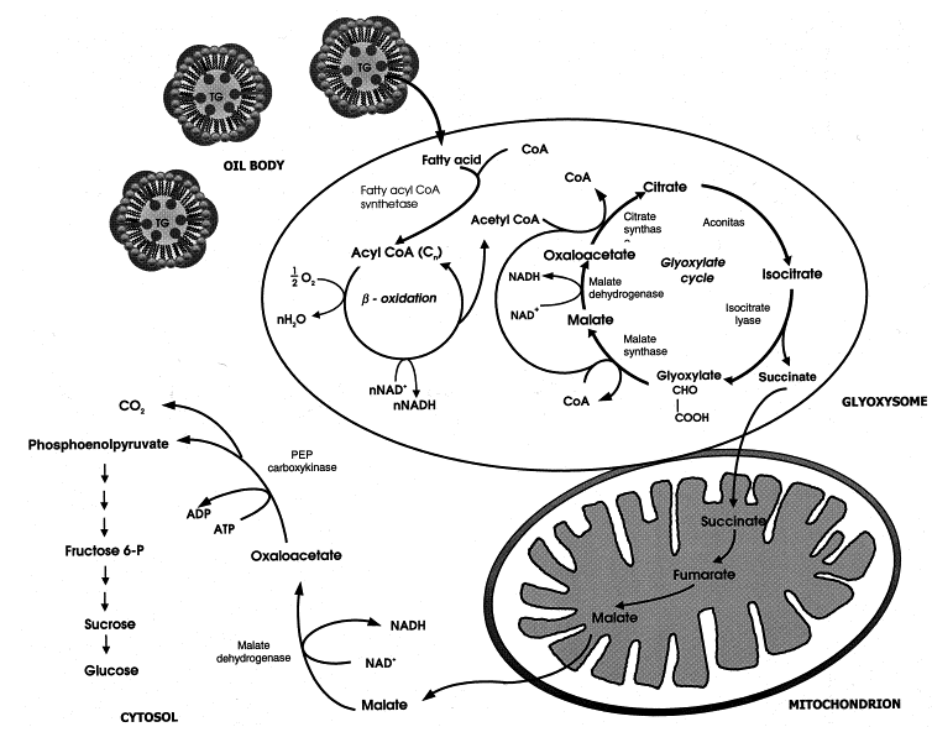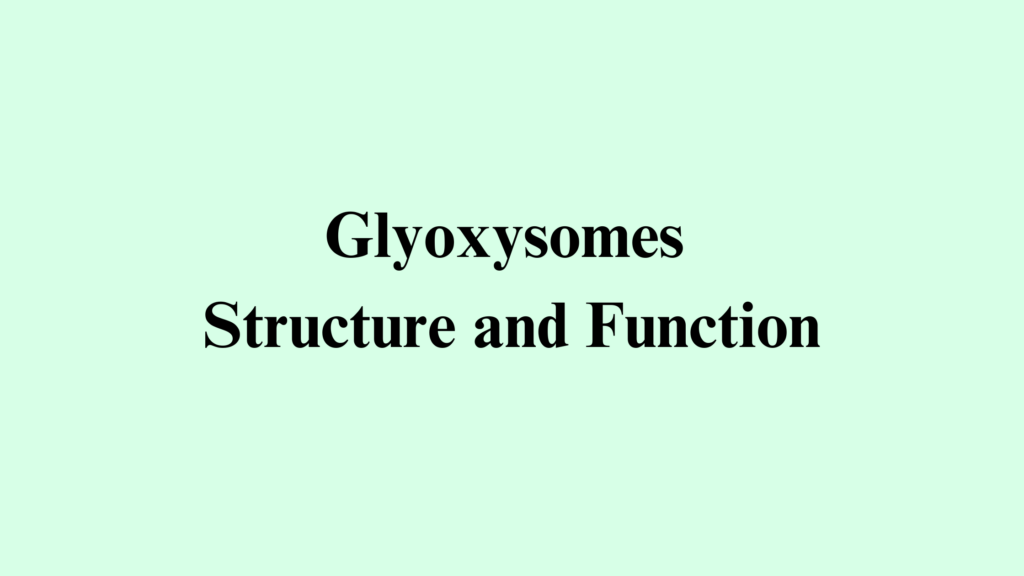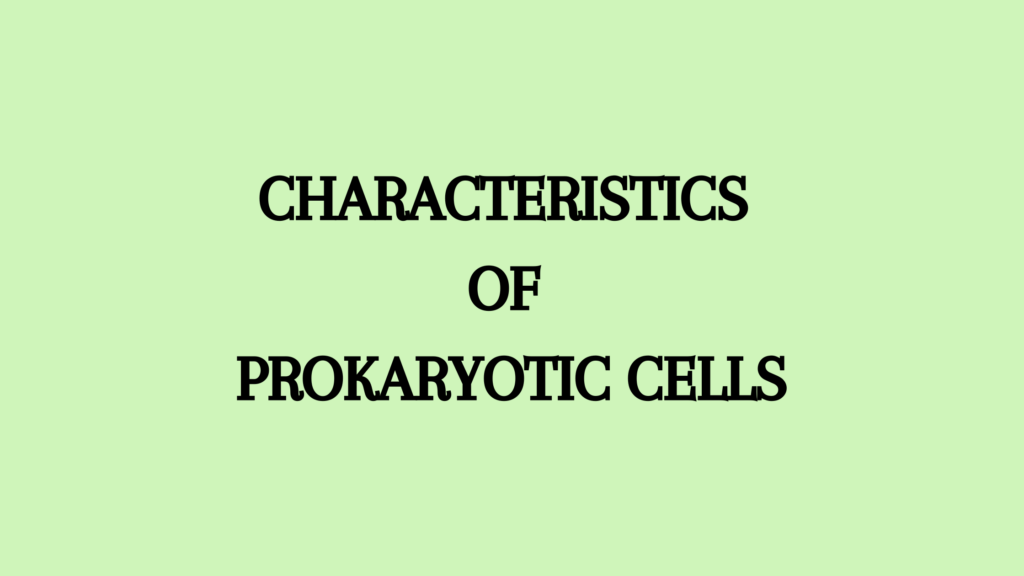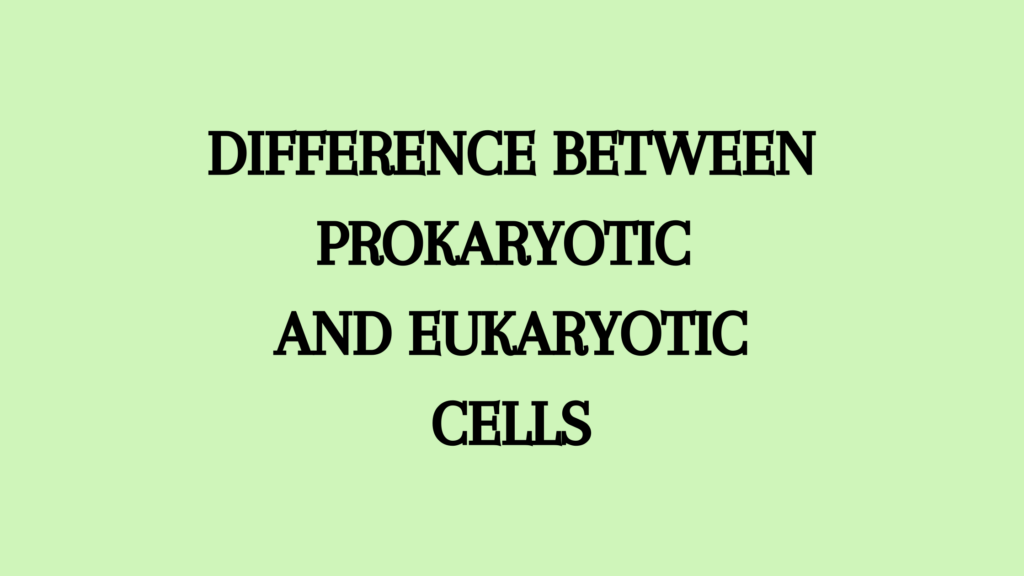Write a short note on glyoxysomes structure and function.
Glyoxysomes are microbodies in the cell that are morphologically similar to peroxisomes. Micorbodies are small cell organelles having a single membrane and proteinaceous matrix. This matrix consists of the necessary enzymes required for their functions. Peroxisomes, glyoxysomes, and glycosomes are these microbodies.
Glyoxysomes are seen exclusively in plant cells, especially in germinating seeds. They often appear as temporary bodies in transient periods as energy reserves. Their appearance happens after a few days of seed germination.
Glyoxysomes store fat and serve as food reserve cells for the growing embryo. They are associated with lipid bodies such as spherosomes.
Functions of Glyoxysomes
They contain enzymes such as catalases and oxidases that are required for the glyoxylate cycle, fatty acid metabolism, and gluconeogenesis which are the main functions of glyoxysomes.
Fatty Acid Metabolism
- In plant seeds, beta-oxidation of fatty acids occurs in glyoxysomes. In plant cells, it occurs in glyoxysomes and mitochondria.
- During the germination of oily seeds, stored lipid molecules of spherosomes are hydrolyzed. This hydrolysis is enabled by a lipase-glycerol ester hydrolase.
- This hydrolysis transforms lipids into glycerol and fatty acids.
- On the other hand, the enzyme phospholipase hydrolyzes phospholipid molecules.
- The hydrolysis forms long fatty acids that are further broken down, successively to remove two carbon fragments by beta-oxidation.
Beta oxidation
During beta-oxidation, fatty acid is activated by fatty acid thiokinase and is converted into fatty acyl-CoA.
- This fatty acyl-CoA is oxidized into trans-2-enoyl-CoA by the enzyme- FAD-linked fatty acyl-CoA dehydrogenase.
- Trans-2-enoyl-CoA is hydrated by enoyl hydratase or crotonase into L-3-hydroxyacyl-CoA dehydrogenase, into 3-keto-acul-CoA.
- This 3-keto acyl-CoA loses a 2-carbon fragment by thiolase or beat keto thiolase to form acyl-CoA and a fatty acetyl-CoA.
- This fatty acetyl-CoA will have 2 carbons less than the initial one. It will finally undergo a similar process until two acyl-CoA molecules are finally formed.
The glyoxysomal beta oxidation requires oxygen for the oxidation of reduced flavoprotein formed by the action of fatty acyl-CoA dehydrogenase activity.
Moreover, in plant cells, the acyl-CoA formed by beta-oxidation is not oxidized by Kreb’s Cycle. Instead, this acetyl CoA enters the glyoxylate cycle to form succinate.

Glyoxylate Cycle
The glyoxylate cycle in glyoxysomes involves some reactions of Kreb’s cycle. Here oxaloacetate and acetyl-CoA form citrate by citrate synthetase.
- This citrate is then converted into isocitrate by aconitase.
- Isocitrate is converted into glyoxylate and succinate by the enzyme isocitratse.
- This glyoxylate and another molecule of acetyl-CoA form malate by malate synthetase.
- Malate is converted into oxaloacetate by malate dehydrogenase.
Thus the end product of the glyoxylate cycle is succinate since it is not further metabolised. Malate is produced to regenerate oxaloacetate.
References
- Dey, P., Brownleader, M., & Harborne, J. (1996). The Plant, the Cell, and its Molecular Components. Plant Biochemistry, 1-47. https://doi.org/10.1016/B978-012214674-9/50002-3
- Agarwal, P. V. |. V. (2004). Cell biology, Genetics, Molecular Biology, Evolution, and Ecology: Evolution and Ecology. S. Chand Publishing.




